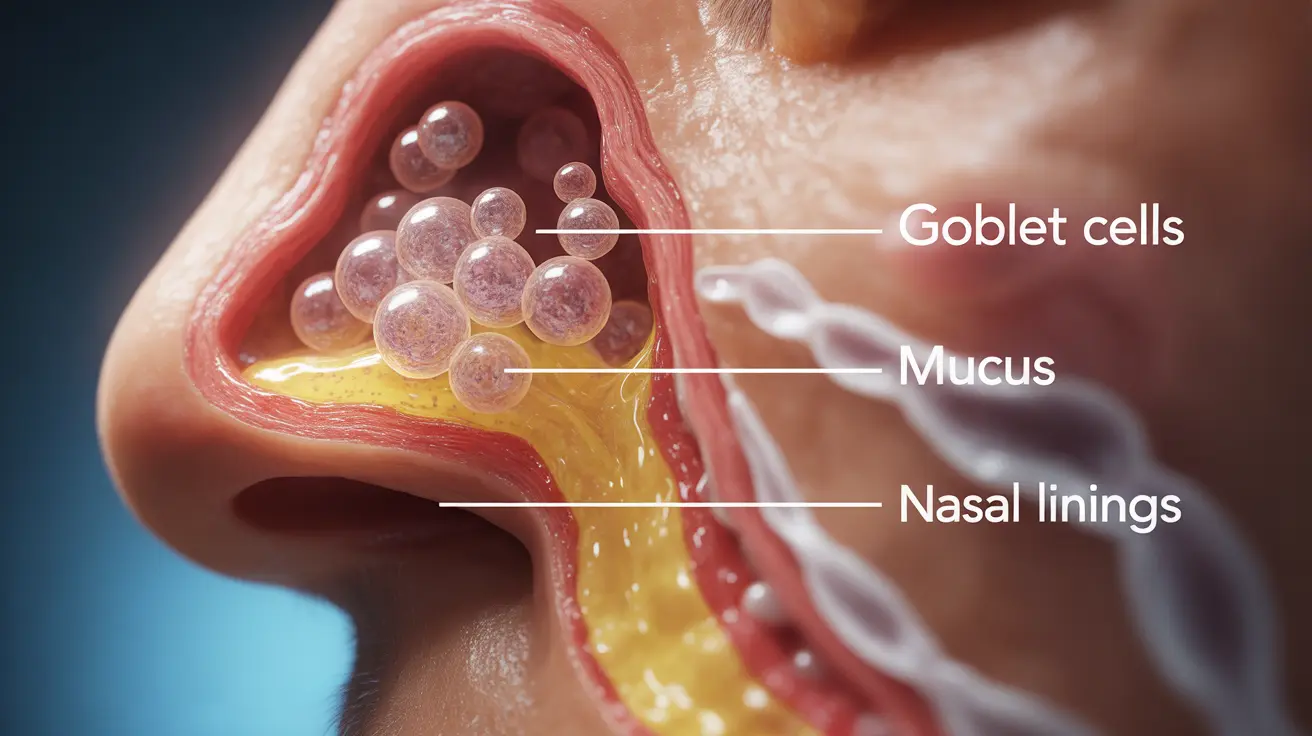Nasal mucus, commonly known as snot, is a vital bodily fluid that plays a crucial role in our respiratory health and immune system. While many people consider it merely an annoyance, this sticky substance serves as our body's first line of defense against harmful particles, bacteria, and viruses that we encounter daily.
Understanding where snot comes from and its various functions can help us better appreciate its importance in maintaining our health. Let's explore the fascinating world of nasal mucus production and its essential role in protecting our bodies.
The Origin of Nasal Mucus
Nasal mucus is produced by specialized cells called goblet cells and submucosal glands located in the lining of your nasal passages. These cells work continuously to create a protective layer of mucus that covers the entire nasal cavity, helping to filter, humidify, and clean the air we breathe.
The average person produces about 1-1.5 liters of nasal mucus daily, though most of this goes unnoticed as it typically drains down the back of the throat through a process called post-nasal drip.
The Composition of Nasal Mucus
Nasal mucus consists of several components that make it effective at protecting our respiratory system:
- Water (95%)
- Proteins and enzymes
- Antibodies
- Salt and other electrolytes
- Antimicrobial compounds
How Nasal Mucus Protects Your Body
Nasal mucus serves multiple protective functions that are essential for maintaining respiratory health:
Physical Barrier
The sticky consistency of mucus helps trap harmful particles, including dust, pollen, and other irritants, preventing them from reaching deeper into the respiratory system.
Immune Defense
Mucus contains important immune system components, including antibodies and enzymes that help fight off potential infections before they can take hold.
Moisturizing Function
By maintaining proper humidity levels in the nasal passages, mucus helps prevent the delicate tissues from becoming dry and irritated.
Changes in Nasal Mucus Production
Various factors can affect the amount and consistency of nasal mucus produced:
Environmental Triggers
- Temperature changes
- Air pollution
- Smoke exposure
- Seasonal allergies
Health Conditions
- Viral infections
- Bacterial infections
- Chronic sinusitis
- Allergic reactions
Managing Nasal Mucus Production
While nasal mucus is essential for health, excessive production can be uncomfortable. Here are some ways to manage it:
- Stay hydrated
- Use a humidifier
- Practice good nasal hygiene
- Consider using saline nasal sprays
- Avoid known irritants and allergens
Frequently Asked Questions
- Where does snot come from and why does my nose produce it daily?
Snot comes from specialized goblet cells and submucosal glands in your nasal passages. Your nose produces it daily to trap harmful particles, moisturize nasal passages, and help fight off infections.
- What causes snot to change color and consistency during a cold or allergy?
Color and consistency changes occur due to your immune system's response to infections or allergens. White blood cells, dead virus particles, and bacteria can alter the appearance of nasal mucus.
- How does snot help protect my body from infections and irritants?
Snot acts as a physical barrier, trapping harmful particles and containing immune system components that fight off potential infections. It also helps maintain proper humidity in nasal passages.
- Why do I get a runny nose when I cry or am exposed to smoke or pollen?
Your nose produces extra mucus in response to irritants like smoke or pollen as a protective mechanism. When crying, tears drain through the tear ducts into your nasal passages, increasing nasal secretions.
- What are effective ways to reduce excessive snot production during allergies or infections?
Effective ways include staying hydrated, using saline nasal sprays, running a humidifier, avoiding triggers, and considering over-the-counter antihistamines or decongestants after consulting with a healthcare provider.




